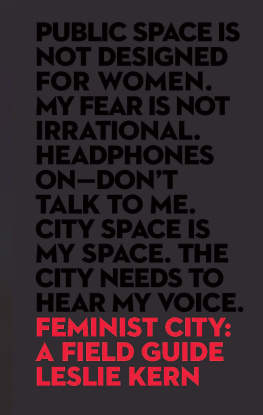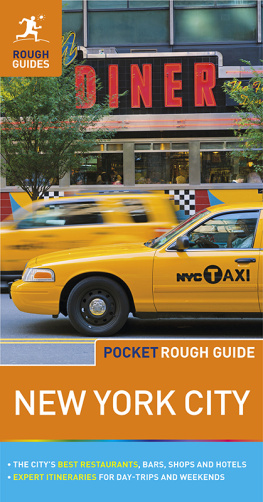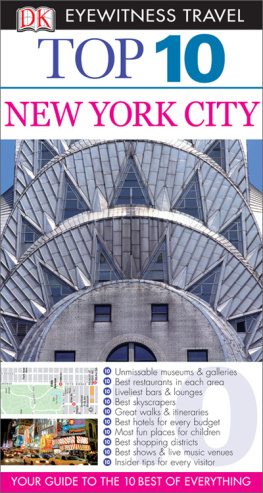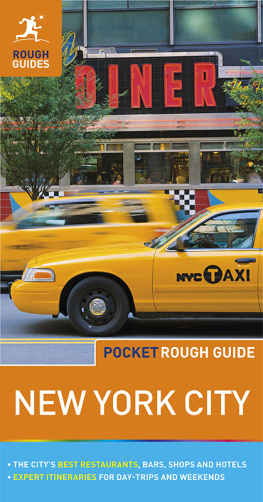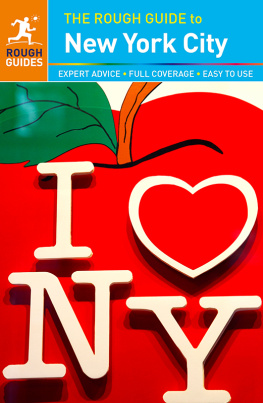Field Guide to the Natural World of New York City


Field Guide to the Natural World of New York City
LESLIE DAY
Illustrated by
MARK A. KLINGLER
Foreword by
MICHAEL R. BLOOMBERG
In association with the New York City
Department of Parks & Recreation

2007 The Johns Hopkins University Press
All rights reserved. Published 2007
Printed in China on acid-free paper
9 8 7 6 5 4 3 2 1
The Johns Hopkins University Press
2715 North Charles Street
Baltimore, Maryland 212184363
www.press.jhu.edu
Day, Leslie, 1945
Field guide to the natural world of New York City / by Leslie Day; illustrated by
Mark A. Klingler; with a foreword by Michael R. Bloomberg.
p. cm.
Includes bibliographical references and index.
ISBN-13: 9780801886812 (hardcover : alk. paper)
ISBN-13: 9780801886829 (pbk. : alk. paper)
ISBN-10: 0801886813 (hardcover : alk. paper)
ISBN-10: 0801886821 (pbk. : alk. paper)
1. Natural historyNew York (State)New YorkGuidebooks. 2. New York
(N.Y.)Guidebooks. I. Title.
QH105.N7D39 2007
917.470443dc22 2007006288
A catalog record for this book is available from the British Library.
All watercolor plates 2007 Mark A. Klingler
Photographs of trees and shrubs by Leslie Day
Book design by Kimberly Glyder Design
CONTENTS
, BY MICHAEL R. BLOOMBERG
FOREWORD
NEW YORK, OUR BELOVED CITY of 8.2 million, is many things: a leading cultural center, a place of history and myth, the financial capital of the United States, and the melting pot of the world. When I tell visitors about its parks and its wildlife, however, they often look at me with surpriseor think that I am referring only to Manhattans magnificent Central Park. But New York City has a wealth of open space, and is one of the greenest cities in America, and perhaps the world.
Our Emerald Empire, as the New York City Department of Parks & Recreation calls it, comprises over eleven thousand acres, and includes forests, woodlands, freshwater wetlands, and salt marsh ecosystems. When one adds to this the natural areas managed by the state and federal government throughout the five boroughs, the City contains over twenty-five thousand acres of natural parkland. This book, written by a local environmental educator and naturalist, looks deeply at the secret and not-so-secret green spaces that help make our City a rare gem.
In these pages, Dr. Leslie Day takes us into New Yorks forever wild sites, and along the curves of our Citys long shoreline, but she also reveals the nature that is right in front of us, for example, outside coffee shops, restaurants, and theaters on one of our green streets. This book is our guide to unveiling a hidden New York that we might not have noticed before, helping us investigate and identify the butterflies, wildflowers, birds, embankments, and other features of our landscape and ecosystem that we pass by every day on the way to somewhere else.
The City and its Parks Department are hard at work protecting our natural heritage. These efforts help ensure that all New Yorkers and visitors have access to the natural wonders that bring such sparkle to our great City. Using this book you, too, can discover the Natural World of New York City. I hope you enjoy the journey.
Michael R. Bloomberg

Mayor

ACKNOWLEDGMENTS
THE BEAUTY OF THIS BOOK lies in the contributions of the talented artists and photographers who shared their work with me. First and foremost is Mark Klingler whose splendid paintings have given this book its charm and made it come to life. Second would be Jean Steins who so kindly let us use the detailed and elegant maps by her late husband, the cartographer Mark Stein. Thank you to George Booruji for his beautifully illustrated map of New York City. I am indebted to Mike Feller, Don Riepe, David Knstler, Marjorie Pangione, and Clodagh Green for their stunning photographs. A special thank you to Cathy Klingler for her support and assistance.
I would like to thank the following people who helped with this book: Commissioner of Parks Adrian Benepe; New York City Department of Parks and Recreation, Natural Resources Group: Bill Tai, Alexander Brash, now with the National Parks Conservation Association; Mike Feller, Marge Gargiullo, Janine Harris, and Ellen Pehek, all helped check the parks and species descriptions for accuracy. Van Cortlandt Park and Pelham Bay Park: Margot Peron, David Knstler; William Schiller, American Museum of Natural History. Riverside Park: Crista Carmody, Sal Trento, Margaret Bracken. Riverside Park Fund: Jim Dowell, Terry Cohen, Sabrina Dukes, Jeff Nulle. Central Park Conservancy: Sara Cedar Miller. Mount Loretto Unique Area: Betsy Ukeritis, New York State Department of Environmental Conservation. Staten Island Protectors of Pine Oak Woods and Dick Buegler. Jamaica Bay Wildlife Preserve: Don Riepe: New York Littoral Society; Robert Cook, PhD. Floyd Bennett Field: Ron and Jean Bourque. Prospect Park: Peter Dorosch and the Brooklyn Bird Club.
Over the years, the following people and organizations have helped with research in the following areas: Fish: Tom Lake, Hudson River Estuary Naturalist, N.Y. State Department of Environmental Conservation and Christopher Letts of the Hudson River Foundation. Amphibians, reptiles, and mammals: Robert Cook, PhD, U.S. Department of the Interior, Cape Cod National Seashore; Lori Cramer, New York Turtle and Tortoise Society. Birds: Peter Dorosch and the Brooklyn Bird Club; E. J. McAdams, Joseph Giunta, and Ron Bourque of the New York City Audubon Society; Alison Evans Fragale, Edgewater Parrots. Invertebrates: Randy Mercurio, American Museum of Natural History. Mycology: Howard Goldstein, MD, New York Mycological Society; Vladamir Schuster. Wildflowers: Aril Lowry, New York Botanical Garden; Jean Bourque, New York City Audubon Society. Trees: Wayne Cahilly, New York Botanical Garden. Geology: Pamela Brock, PhD, Patrick Brock, PhD, and Alan Ludman, PhD, Queens College; Jay Holmes, American Museum of Natural History; Guillermo Rocha, Brooklyn College. I also thank Sidney Horenstein, Environmental Educator Emeritus of the American Museum of Natural History, whose marvelous geological tours of New York City on land and on water are so enlightening.
I am so grateful to those who walked the parks with me and taught me so much. In particular, Jill Benzer, whose love and knowledge of the natural world of New York City is inspirational, and Sanda Cohen, who showed me the wonderful backyard world of her childhood: Brooklyns Prospect Park. I thank educators Sharon Seitz, who has spent years researching and writing about the history of New York Citys islands and shorelines, and Regina McCarthy, who has devoted her adult life to educating teachers about New York Citys parks and the natural world. I am grateful to Lincoln Karim for his beautiful photographs of, and dedication to, Pale Male, the red-tail hawk of Central Park, which continue to inspire me.
Next page

